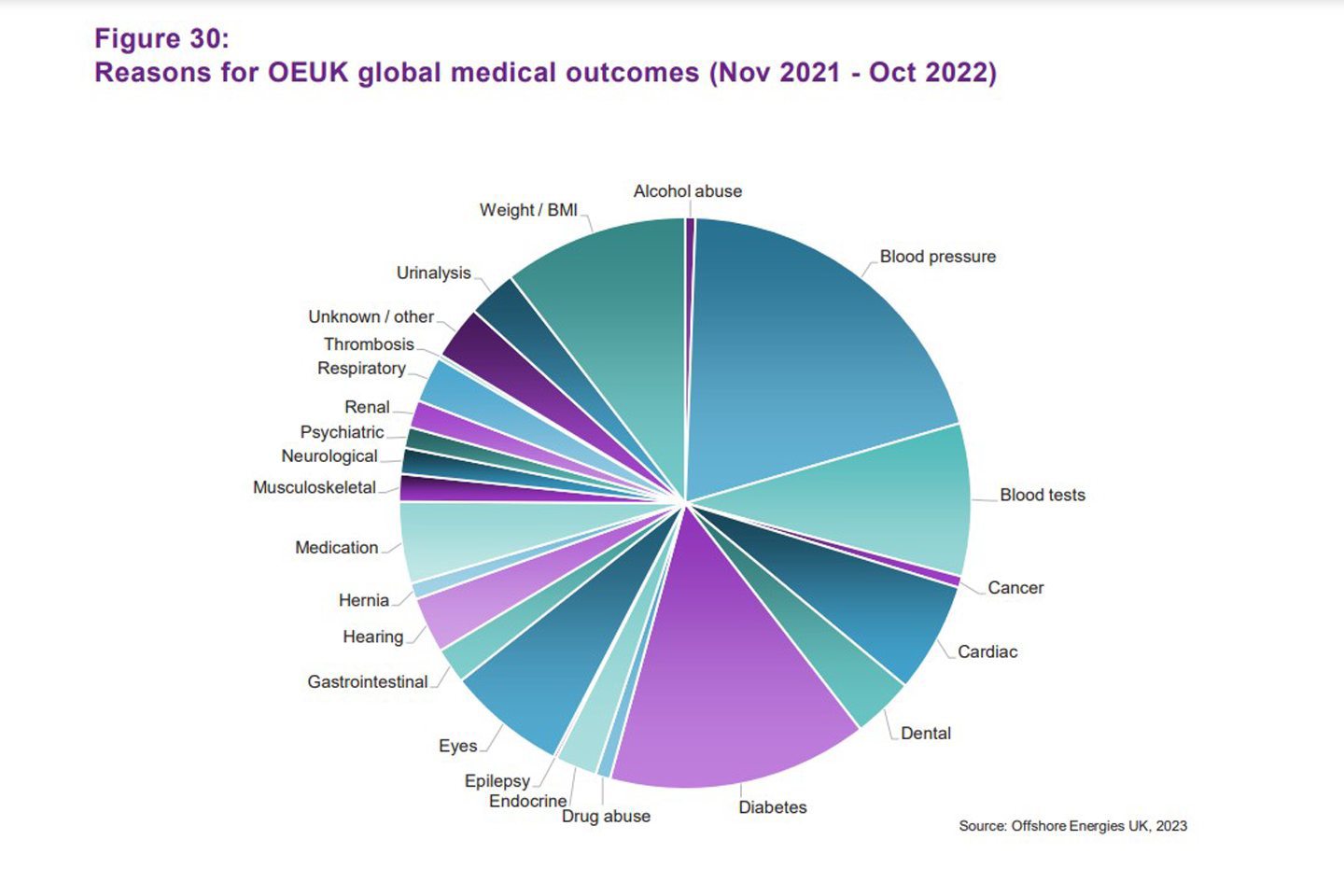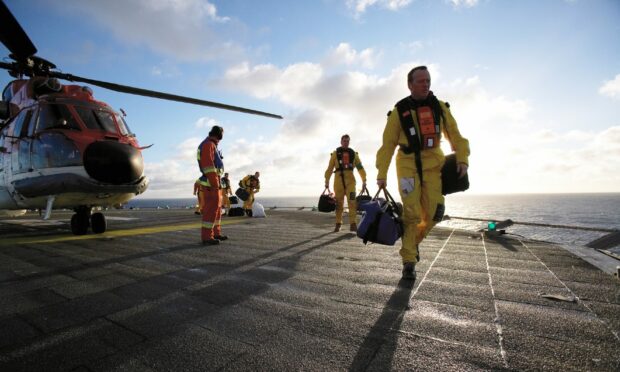Blood pressure, diabetes and weight were the main causes of failed North Sea oil and gas medicals last year.
According to trade body Offshore Energies UK (OEUK), a total of 150,550 medicals were carried out in 2022.
This is the the highest annual total to date and up from 111,612 in 2021.
Of the medicals carried out during 2022, 1,308 failed.
Blood pressure was the No.1 cause of all failed medicals, one in five, while diabetes accounted for 15% and BMI (body mass index)/weight” 10%.
Growing concerns about size of offshore workers
It comes amid growing concerns about the physical size of the offshore workforce, currently being reviewed by OEUK.
Earlier this month Health and Safety Executive letters obtained by Energy Voice, sister website to The Press and Journal, revealed more than one-third of the workers are now deemed to be too heavy to safely fit inside most lifeboats being used in the UK sector.
OEUK has said that so long as workers have a valid medical, their weight or height will not preclude them from going offshore.
But the growing size of workers impacts on whether life-saving equipment is fit for purpose.

On failed medical certificates, OEUK said heart and medication issues in the 50-59 age group were of particular concern.
Meanwhile BMI/weight is “the commonest cause among the under-30s”.
OEUK said: “Overall health challenges for the workforce include high blood pressure and diabetes, and could be related to the increasing weight/body mass index of the workforce.
“Overall health and wellbeing will be a focus for OEUK in addition to traditional occupational health going forward.”
‘No overnight solutions’
When asked how the trade body aims to address concerns, OEUK HSE and operations director Mark Wilson said: “Some of the actions for consideration will include wider wellbeing, as well as aspects of diet, exercise and medical assessments.
“It is recognised that there are no overnight solutions, and we continue to work across the industry to positively influence the offshore energy industry’s health and safety culture.”
Initiatives to tackle these issues will be carried out by “a wide number of stakeholders”, Mr Wilson said.
These include Step Change in Safety, OEUK’s occupational health and hygiene technical group and the “topside medical forum”, which represents OEUK’s doctors.
Medevacs at five-year high
OEUK’s figures also reveal the number of UK offshore medevacs – the emergency removal of sick or injured people – has hit its highest rate in five years.
A total of 337 medevacs were carried out by HM Coastguard in 2022, affecting 0.87% of the offshore population.
This has gone up from the 0.43% reported in 2017, meaning the proportion of workers affected by medevacs has doubled in the past half decade.
OEUK said “cardiac incidents” were the most common reason medevacs in 2022, accounting for 27%.
Minor issues can be treated on installations without recourse to onshore treatment.
OEUK said its medevac figures suggest there may be an “over-reliance on the Coastguard in situations that are not acute.”


Conversation